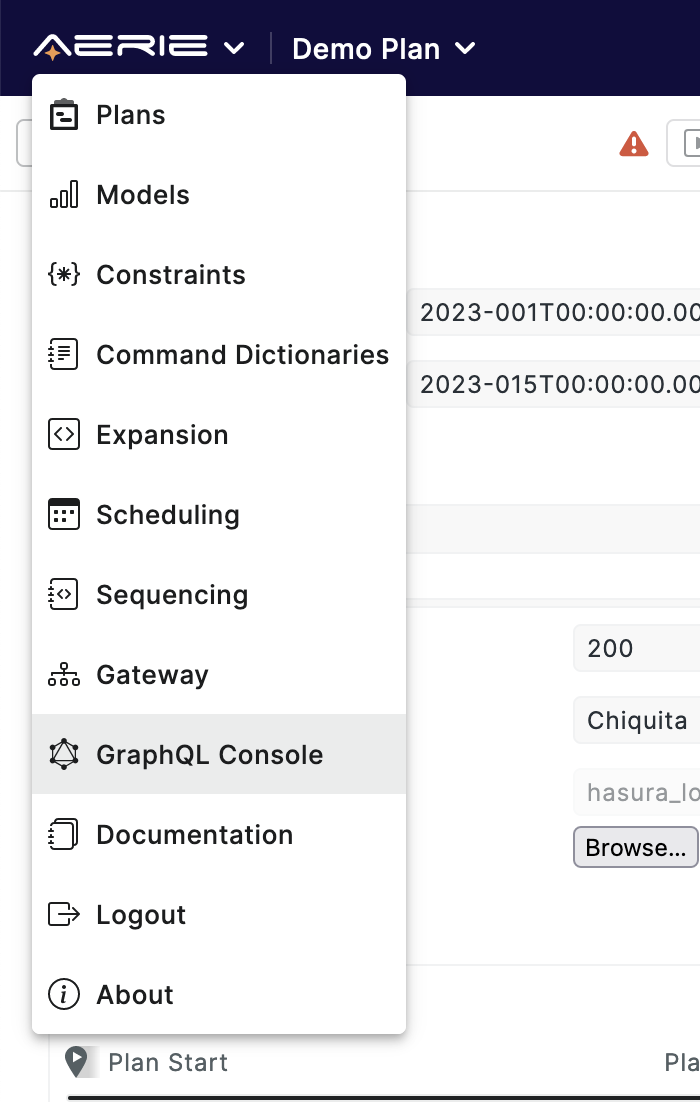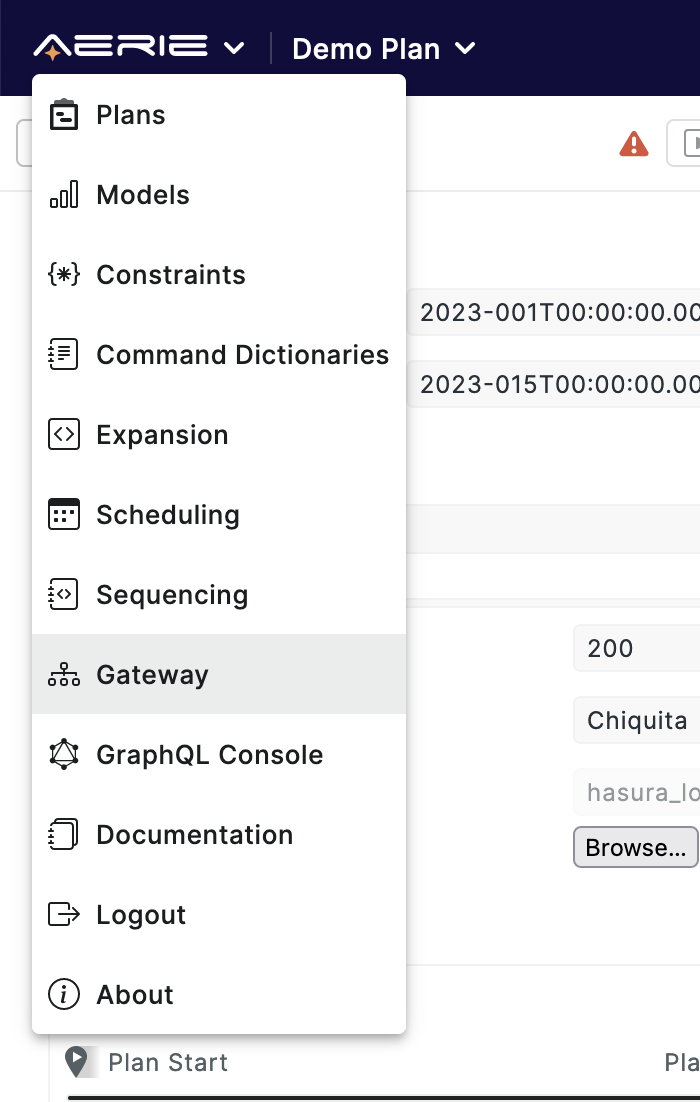Advanced - Incons
If you have previously run simulation on a plan, it is possible to use that simulation data to initialize resources in a later simulation run. This can be useful when running Temporal Subset Simulation, or if one plan's input is dependent on the output of another.
In order to take advantage of this feature, the Mission Model must be written to support loading incons from a file.
The instructions on this page are designed to work with the example Mission Model changes provided here. They may need to be tweaked slightly depending on how your model implemented incon loading.
Step 1: Get the Incons from Hasura
Navigate to your deployment's Hasura GraphQL console by selecting GraphQL Console in the dropdown under Aerie.
By default, the GraphQL console is accessible on port 8080.

In the Hasura GraphiQL console of your deployment, enter the following query:
query GetResources($dataset_id: Int!, $start_offset: interval!) {
getResourcesAtStartOffset(args: { _dataset_id: $dataset_id, _start_offset: $start_offset }) {
id
dataset_id
dynamics
is_gap
name
start_offset
type
}
}
In the Query Variables field below, enter a JSON that specifies the id of the simulation dataset to use,
and how far into the results you'd like to get results, in the format hh:mm:ss.
For example, the following sample JSON would get the values of all previously set resources four days into the thirteenth simulation:
{
"dataset_id": 13,
"start_offset": "96:00:00"
}
The simulation dataset ID can be found in the Simulation History section of the Simulation pane.
If the first time a resource's value is set is after start_offset, it will not appear in the returned list of resources.
Step 2: Export and Upload the Incons
Take the value of "getResourcesAtStartOffset" from the output of the query and copy it into a JSON file.
Next, navigate to your deployment's Gateway by selecting Gateway in the dropdown under Aerie.
By default, the Gateway is accessible on port 9000.

Scroll down to Files and select POST /file.
Click the Try it out button.
In the x-auth-sso-token field, enter your auth token if you have one, or, if auth is disabled, enter unknown.
If you do not know your auth token, you can get it by logging in using the POST /auth/login action.
Click the browse button next to file and select the JSON with the incons.
Click the Execute button. In ServerResponse, you should see a response body that looks like:
{
"file": {
"fieldname": "file",
"originalname": "incons.json",
"encoding": "7bit",
"mimetype": "application/json",
"destination": "files",
"filename": "incons-1682384407286-7ouftKBnfPWs93.json",
"path": "files/incons-1682384407286-7ouftKBnfPWs93.json",
"size": 2539
},
"id": 8
}
The most important element of this JSON is filename. It contains the name of the file within Aerie.
Step 3: Use the Incons in Simulation
Finally, open the Simulation Configuration panel and set the inconsPath argument to <path-to-aerie-file-store>/<filename>,
where <path-to-aerie-file-store> is the path to where the aerie_file_store volume is mounted in Merlin,
and <filename> is the value of "filename" from the earlier JSON from the Gateway.
By default, <path-to-aerie-file-store> is merlin_file_store.